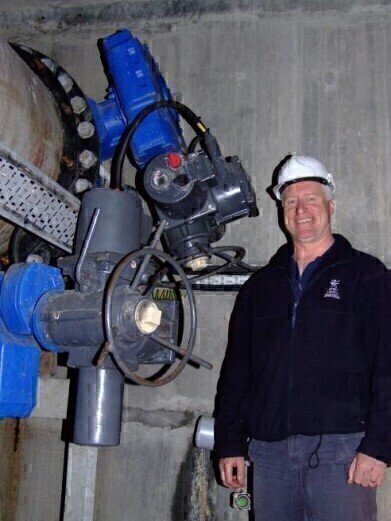-
 The actuated valves are remotely operated from the Salt Water Panel in the Barrage Control Room. Data from floating analysers in the bay assist in gauging the level of salt water in the sump, enabling the operators to open the valves as required and divert the salt water into the appropriate destinations.
The actuated valves are remotely operated from the Salt Water Panel in the Barrage Control Room. Data from floating analysers in the bay assist in gauging the level of salt water in the sump, enabling the operators to open the valves as required and divert the salt water into the appropriate destinations.
Water/Wastewater
Actuators at the Centre of One of the UK’s Most Successful Environmental Regeneration Schemes
Nov 14 2011
The Cardiff Bay Barrage is a highly sophisticated environmental protection mechanism designed to regulate the water level in the 500 acre fresh water Cardiff Bay and to isolate it from the sea by preventing the ingress of sea water.
For over a decade, since the barrage was first completed, the enormous butterfly valves in the underground pipework network that controls the environmental protection process have been reliably operated by Rotork (UK) IQ actuators. The pipework design comprises of a man-made sump in front of the locks on the bay side of the barrage which leads down to a 1200mm pipe installed beneath the barrage in order to return to the sea the salt water introduced to the bay by lock activity.
The IQ actuator on the main pipe valve is fitted with a current position transmitter to enable the valve to be opened at percentage increments in order to control the flow of salt water from the sump. The configuration of the three other actuated valves in the network can be altered to fill either or both of the locks or transfer water between them.
The actuated valves are remotely operated from the Salt Water Panel in the Barrage Control Room. Data from floating analysers in the bay assist in gauging the level of salt water in the sump, enabling the operators to open the valves as required and divert the salt water into the appropriate destinations.
Cardiff Bay is now a recreational and environmental asset; the frequency of actuator operation fluctuates from season to season and from day to day. In busy periods there can be over 150 boat movements through the locks during a weekend. Meanwhile the actuator on the main inlet control valve is constantly in operation throughout the year.
In an adjacent area of the barrage a fishpass is installed; designed to assist the ongoing scientific study of fish health in a changing environment, the fishpass is equipped with six Rotork IQ actuators to control various penstocks and screens leading to different areas of the installation, depending on tidal conditions.
The actuators operate penstocks to allow fish in and out of a fishtrap, where they are examined by the Environment Agency. An additional IQ actuator operates a screen that prevents debris from travelling through the fishpass.
The operation of the fishpass actuators is controlled by a SCADA system in the Barrage Control Room, which is backed up by a motor control centre in the unlikely event of a fault.
Digital Edition
AET 28.4 Oct/Nov 2024
November 2024
Gas Detection - Go from lagging to leading: why investment in gas detection makes sense Air Monitoring - Swirl and vortex meters will aid green hydrogen production - Beyond the Stack: Emi...
View all digital editions
Events
Dec 02 2024 London, UK
Dec 03 2024 Dusseldorf, Germany
Dec 11 2024 Shanghai, China
Jan 12 2025 Abu Dhabi, UAE
Jan 14 2025 Abu Dhabi, UAE












.jpg)





